Tanja Munz
Curvature-Adaptive Remeshing with Feature Preservation of Manifold Triangle Meshes with Boundary
Abstract
In computer graphics meshes are a common representation of surfaces. These meshes are often irregular and contain more vertices than necessary to approximate a surface sufficiently. With remeshing a better mesh can be created for the underlying surface with respect to some quality criteria. In this project, manifold triangle meshes with boundaries and feature edges are considered; they are represented by a half-edge data structure for fast access of neighbouring elements of vertices, edges and triangles. The remeshing approach used is based on local mesh operations (edge-split, edge-flip, edge-collapse and vertex relocation) to adjust the density of elements and to improve their connectivity for a more regular mesh. An optional back-projection of vertices to the original surface can be used to keep the shape of the new mesh close to the reference mesh. With a sizing field based on an approximation of the curvature of the surface it is possible to adjust the sampling density to represent the final mesh with fewer triangles in areas of low curvature. The result of this approach is curvature-adaptive isotropic remeshing of good quality with feature preservation. The whole remeshing process is implemented in an interactive application that allows modifications of parameters.
Images
These are some input meshes used for remeshing:
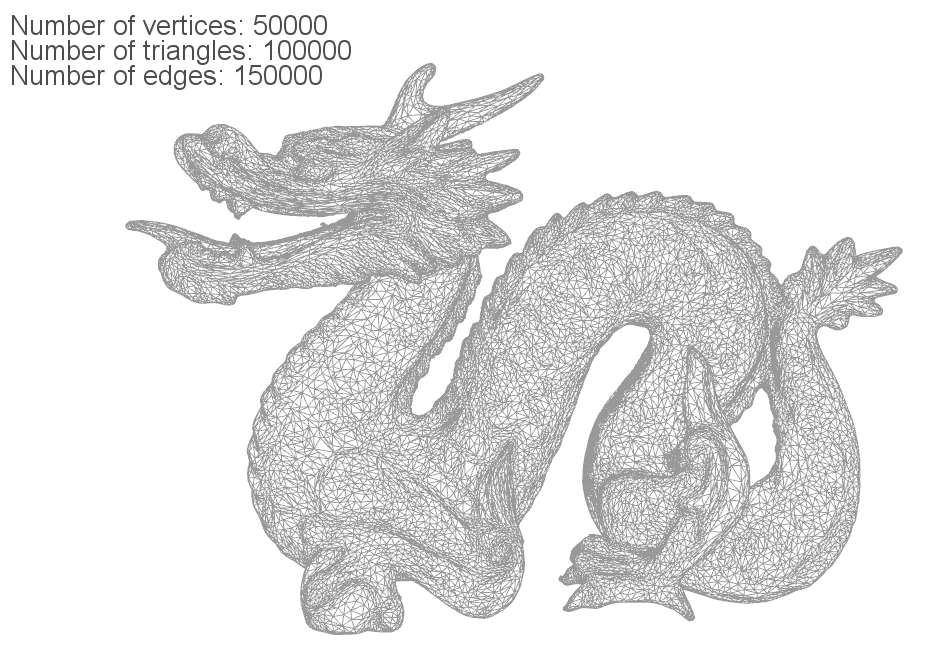
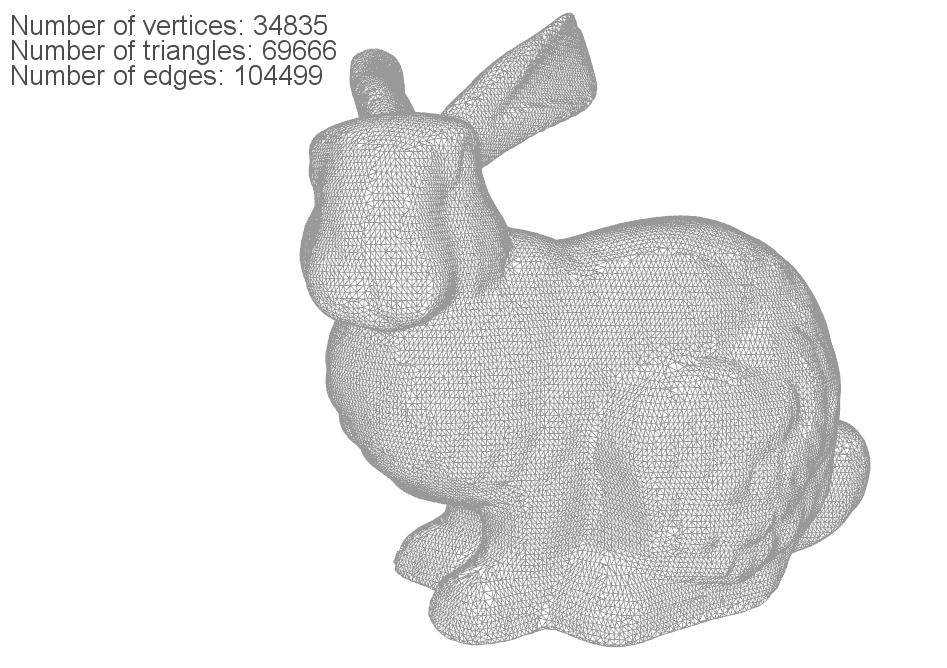
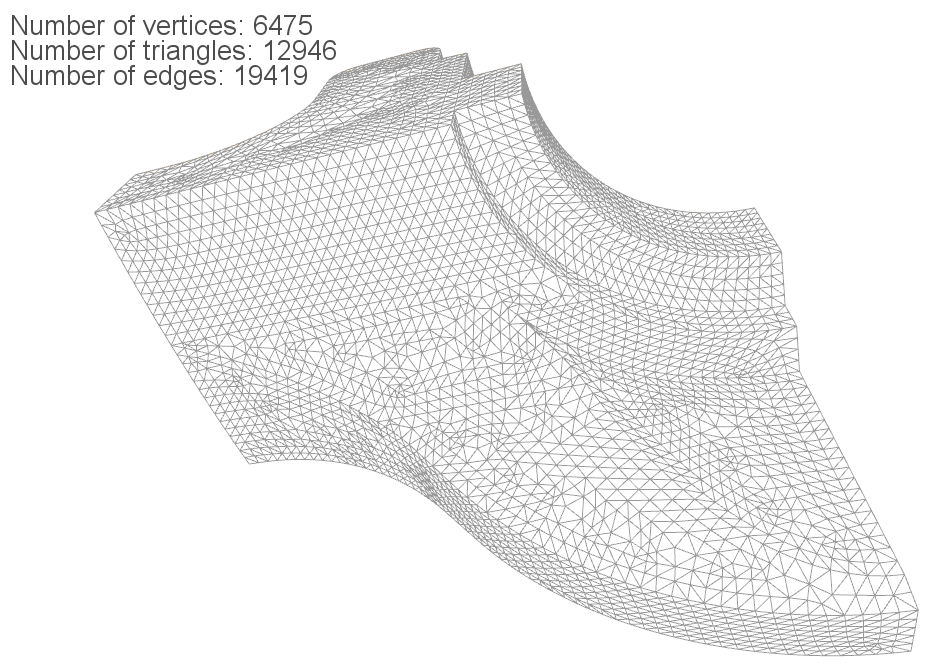
Curvature calculation and feature extraction:

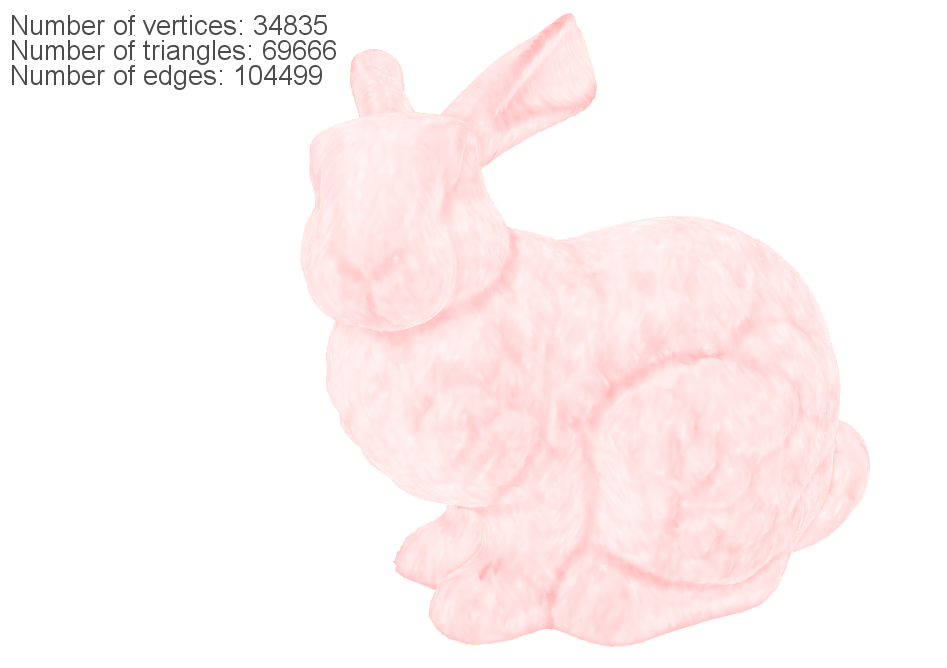
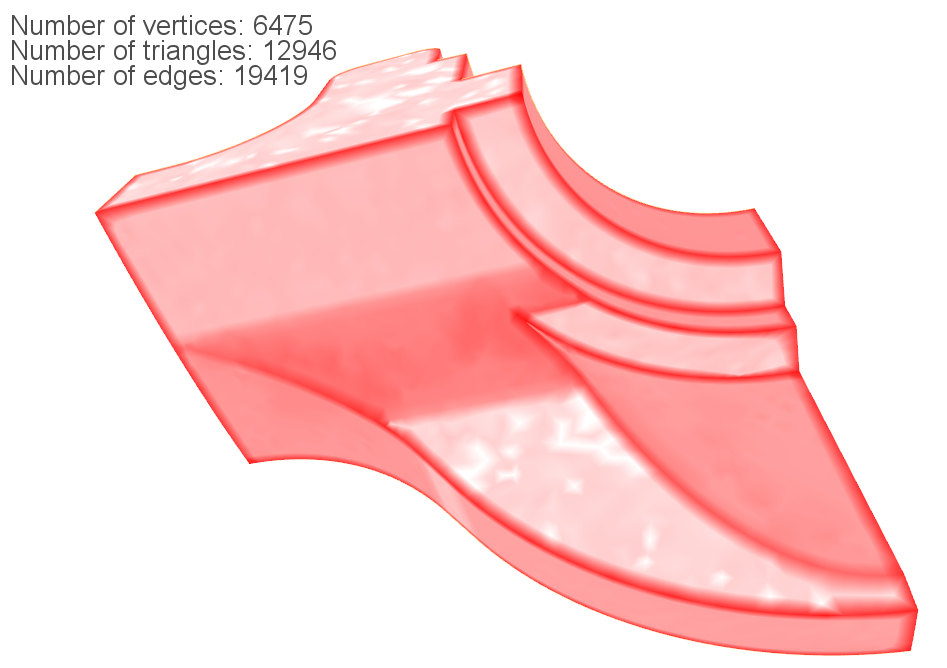
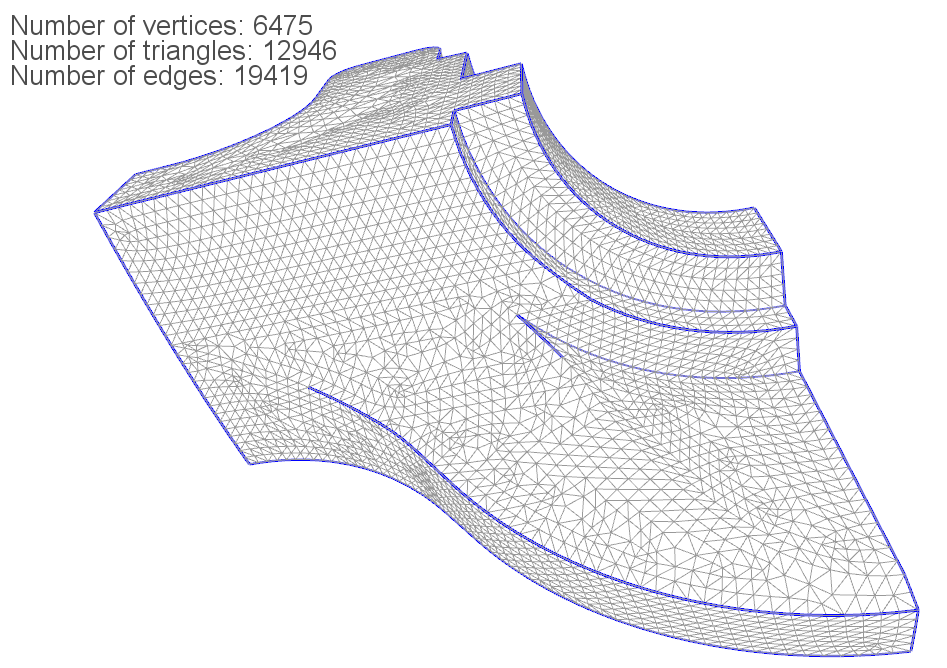
Results obtained with uniform remeshing:
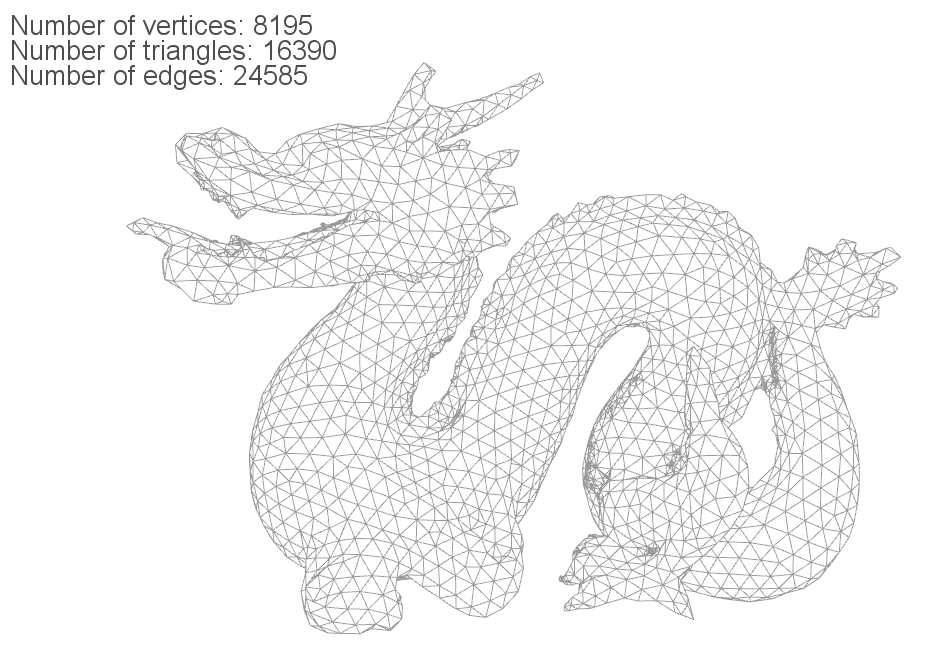
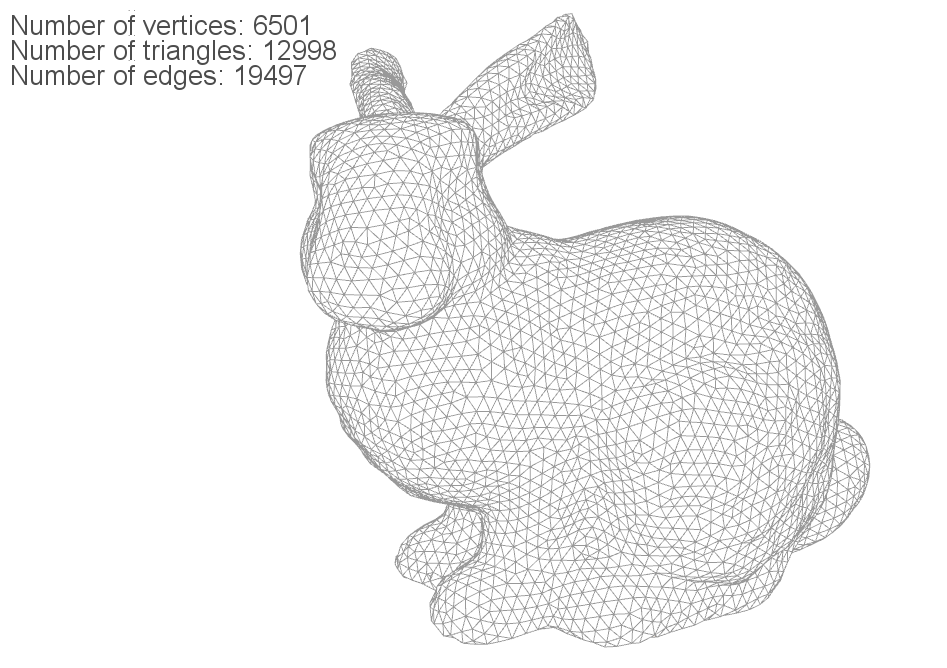
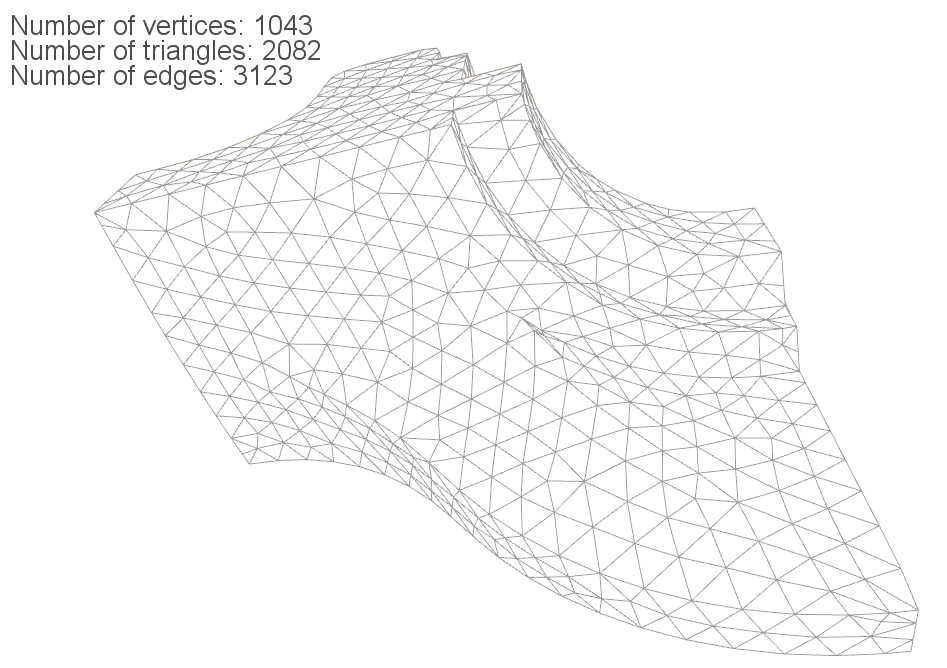
Results obtained with curvature-adaptive remeshing:
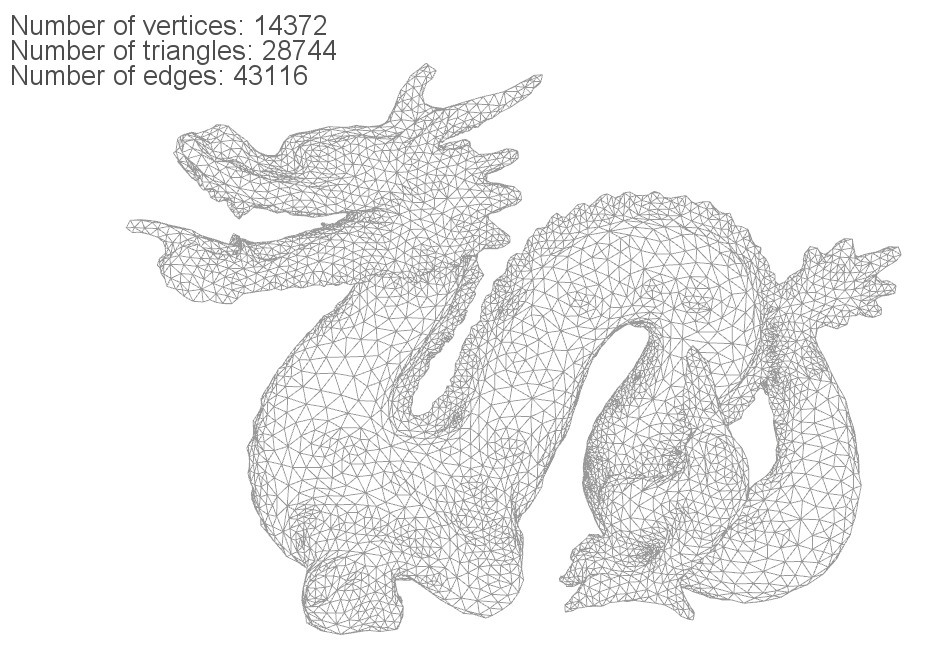
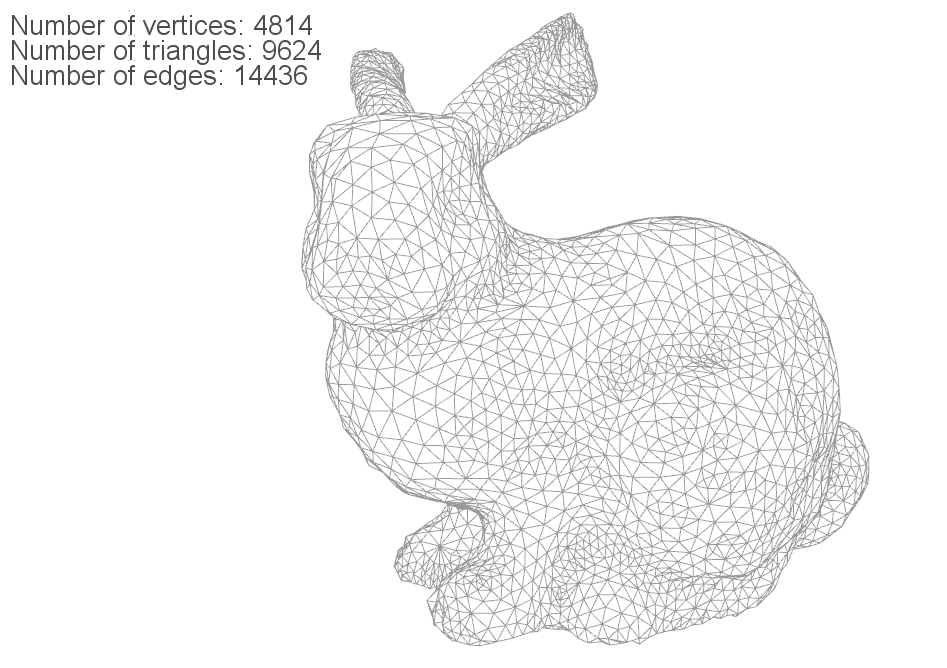
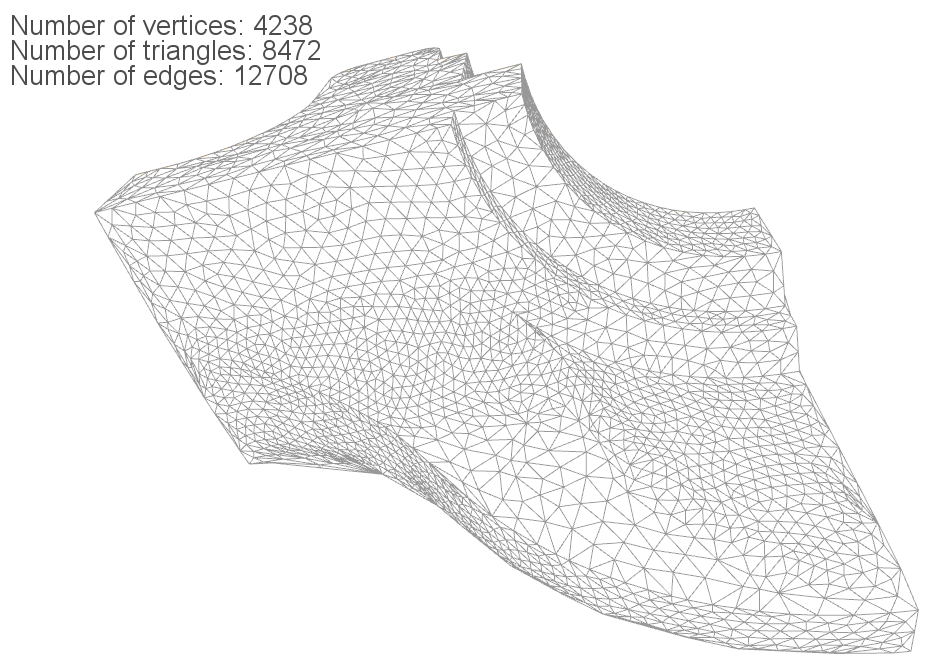
The user interface:

Main Reference
Dunyach M., Vanderhaeghe D., Barthe L. and Botsch M., 2013. Adaptive Remeshing for Real-Time Mesh Deformation. Eurographics Short Papers, 29-32.